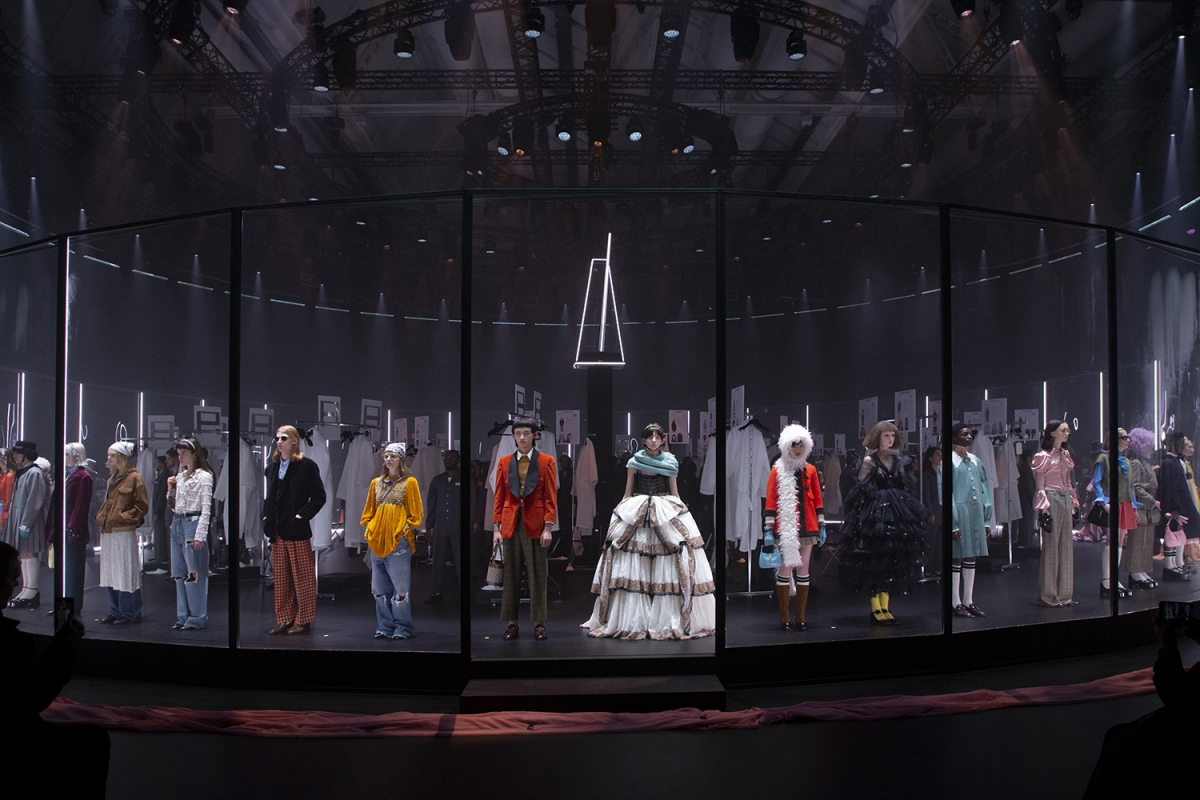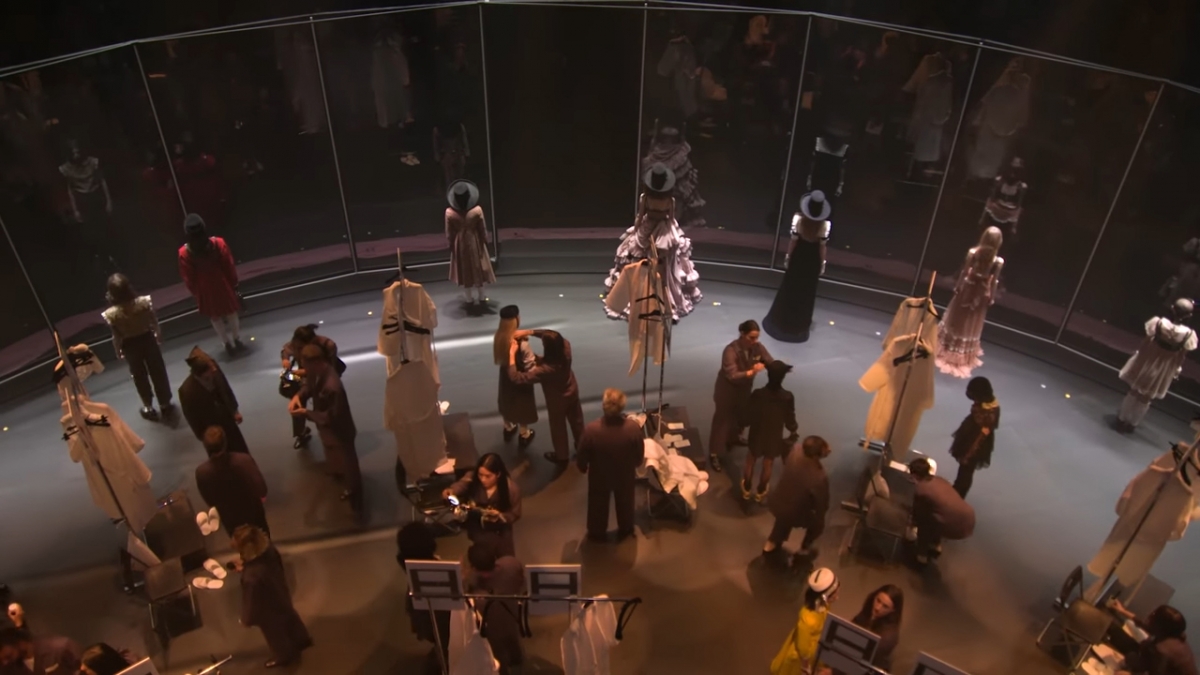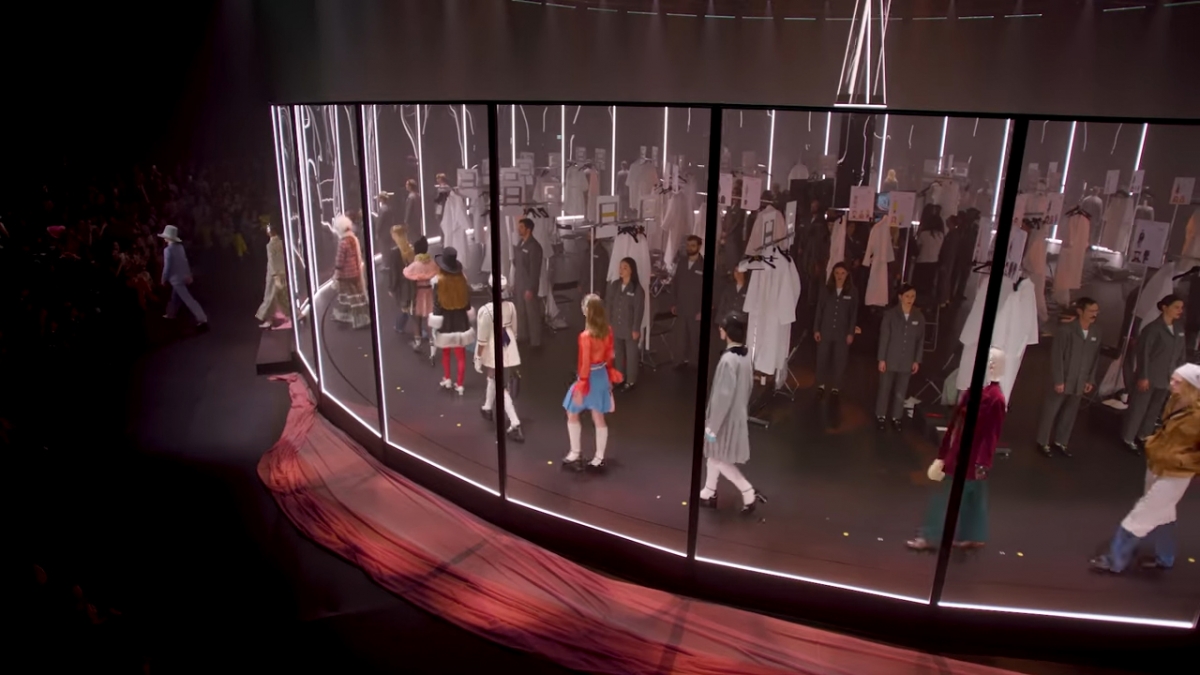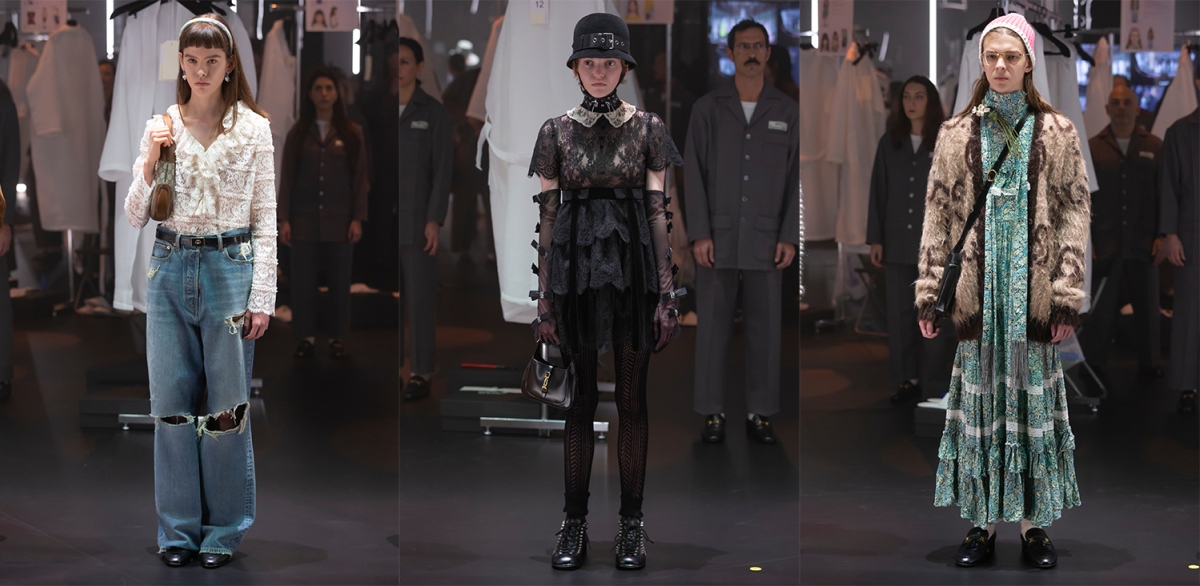


GUCCI F/W 2020 The Women’s Show
- Date 19 Feb. 2020
- Location Gucci Hub, Milan, Italy
- Creative director Alessandro Michele
The Torn Veil
The digital natives of generation Z overturn our established sense of space from the perspective of both consumers and suppliers. They regard analogue technologies as replicable images and embody the imagined in a powerful invented space with greater ease than the material world itself. Here, the essence is that it is not a more realistic but also more emphatically realistic. However, analogue things do exist in the world experienced by generation Z, throughout the diverse built environments that physically surround us all. Fashion is the first step in its physical construction. Fashion is the first functional form of ornamentation and the construction of space around our body. In other words, clothes are the first space and the first architecture, the plane at which our bodies meet the world before directly experiencing space. In addition, fashion is a mobile and independent media. This is the reason why fashion is maintained as the most powerful form of personal expression and medium, ironic as it models various attempts to overcome the physical limitations of human movement and the extreme individualisation of today.
The GUCCI F/W 2020 The Women’s Show raises a question about available strategies available to us when fashion, the most fundamental and progressive spatial medium, must communicate in the most non-physical way. The fashion show unfolds the process of creation in its presentation through several concentric layers. Then there is the striking moment the curtain crashes down between the digitally converted image stage and the irreplicable analogue backstage. Attempts were made to dismantle direction of the runway and to diversify the audience’s single point line of sight. The stage, without audience, rotates, and a still camera views the show with its deeply penetrating gaze. However, it is not easy to decide whether this stage is completely free from a sense of frontality or the direction of conventional fashion shows. At the end of the show, the designer, who is at the centre of the show, walks to the front. It marks the moment at which the stage setting reveals its absent frontage and the direction is broken up. Compared to the shock of the first impression, which delivers the intimate process behind fashion production across something resembling a huge mural, it is regrettable that a fixed camera and the designer’s appearance accompanied by models exposes the fact that this new experience is still set within the singularity of the producer’s viewpoint.
In fact, it is not the world or our cities but humans that have changed. The veil in the sanctuary of the Temple was torn as a means to direct contact with God, leaving no secret between God and humans. God may live inside us, and the future may live in the past. Can we distinguish between the front and the back? Are there only two directions, analogue and digital? Where are we heading? (written by Chung Isak / edited by Choi Eunhwa)






